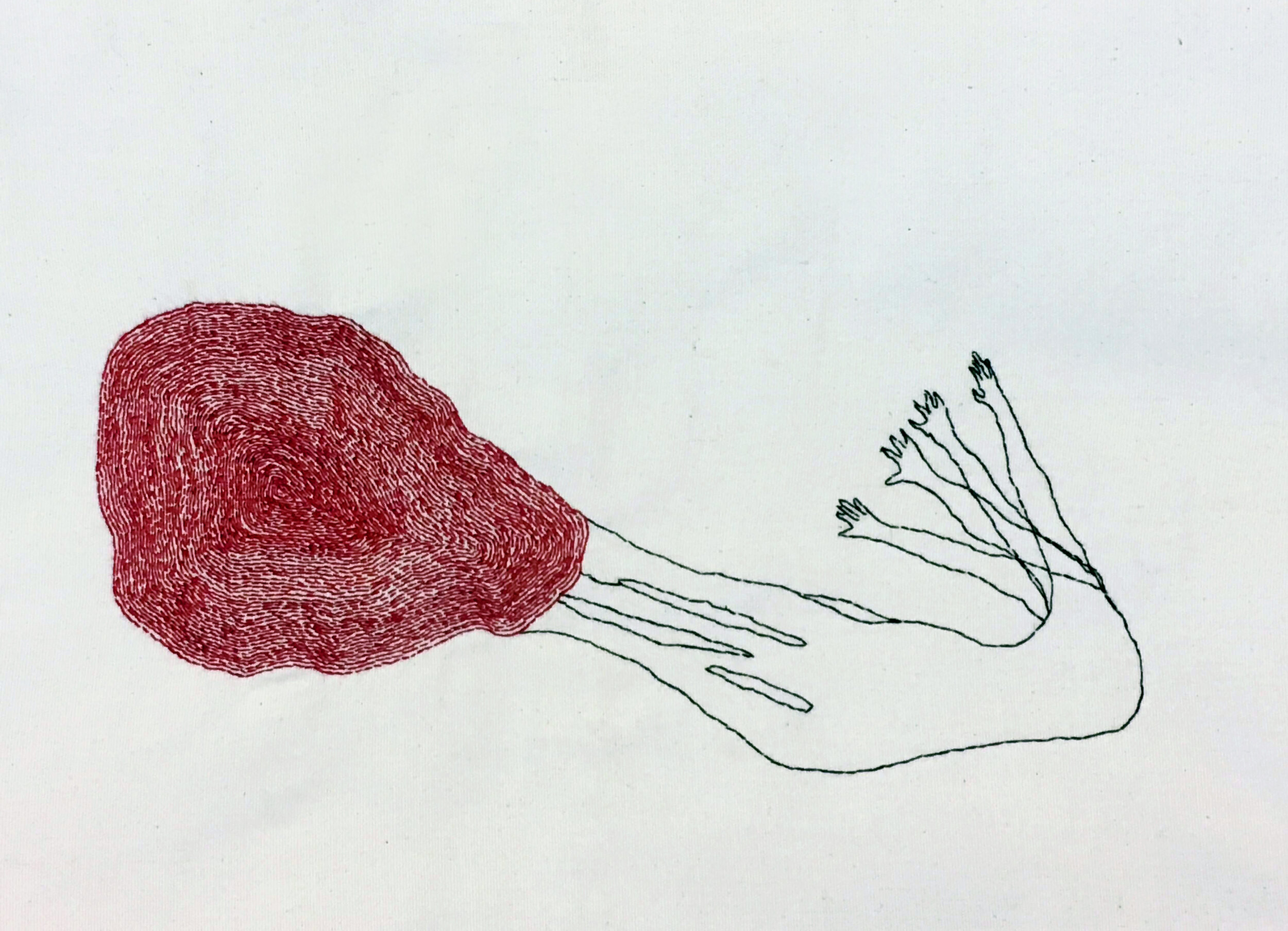
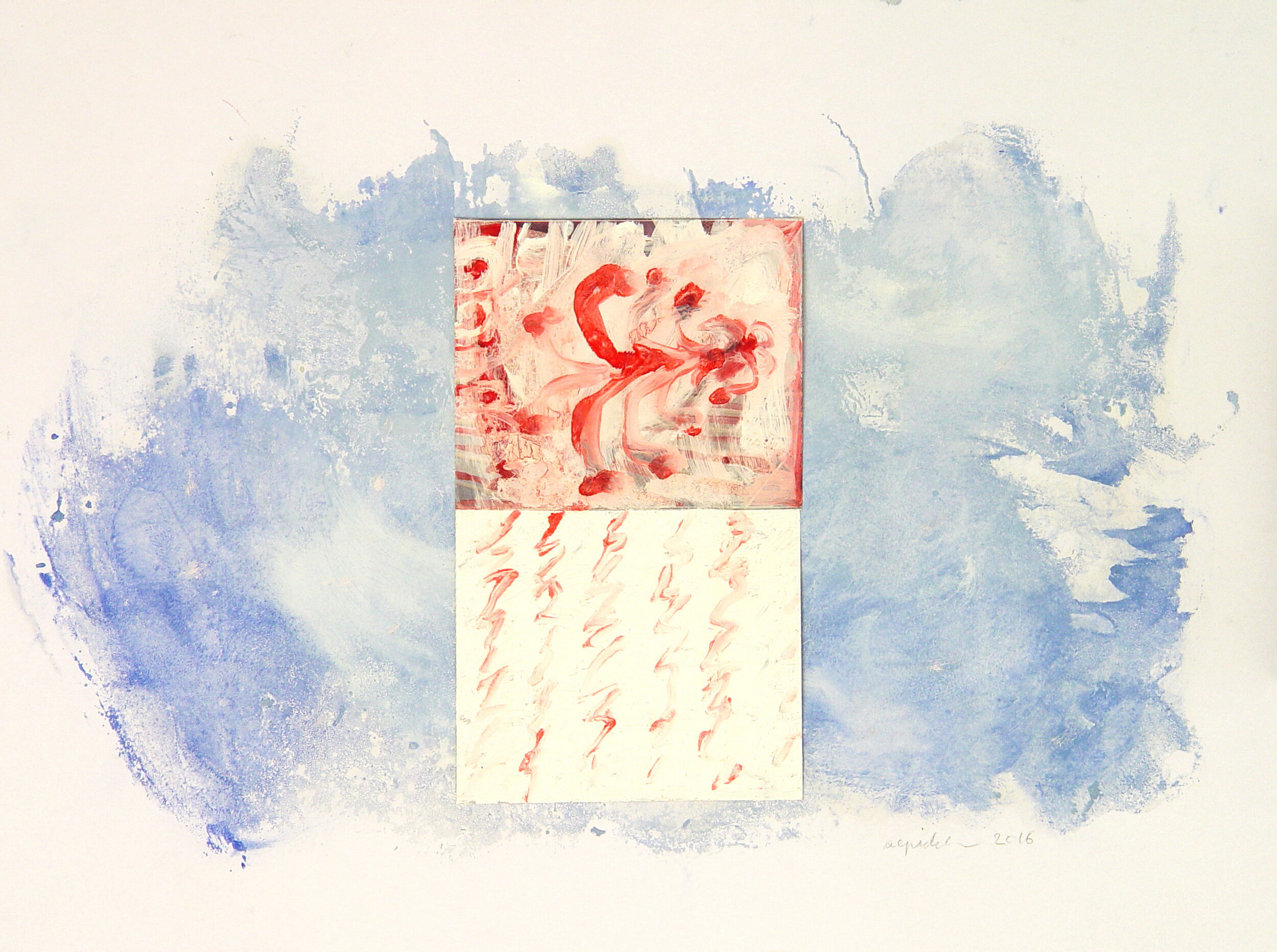
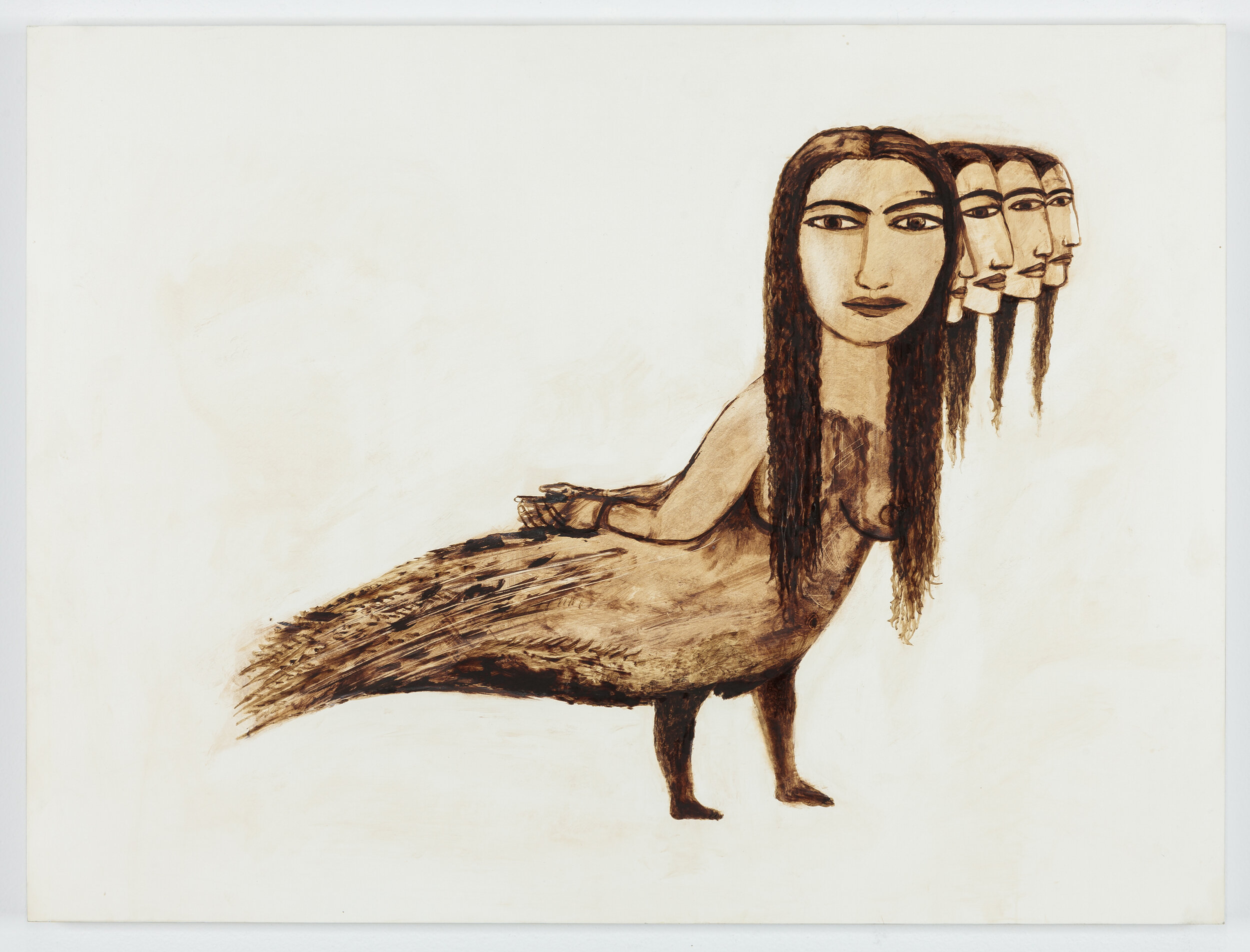
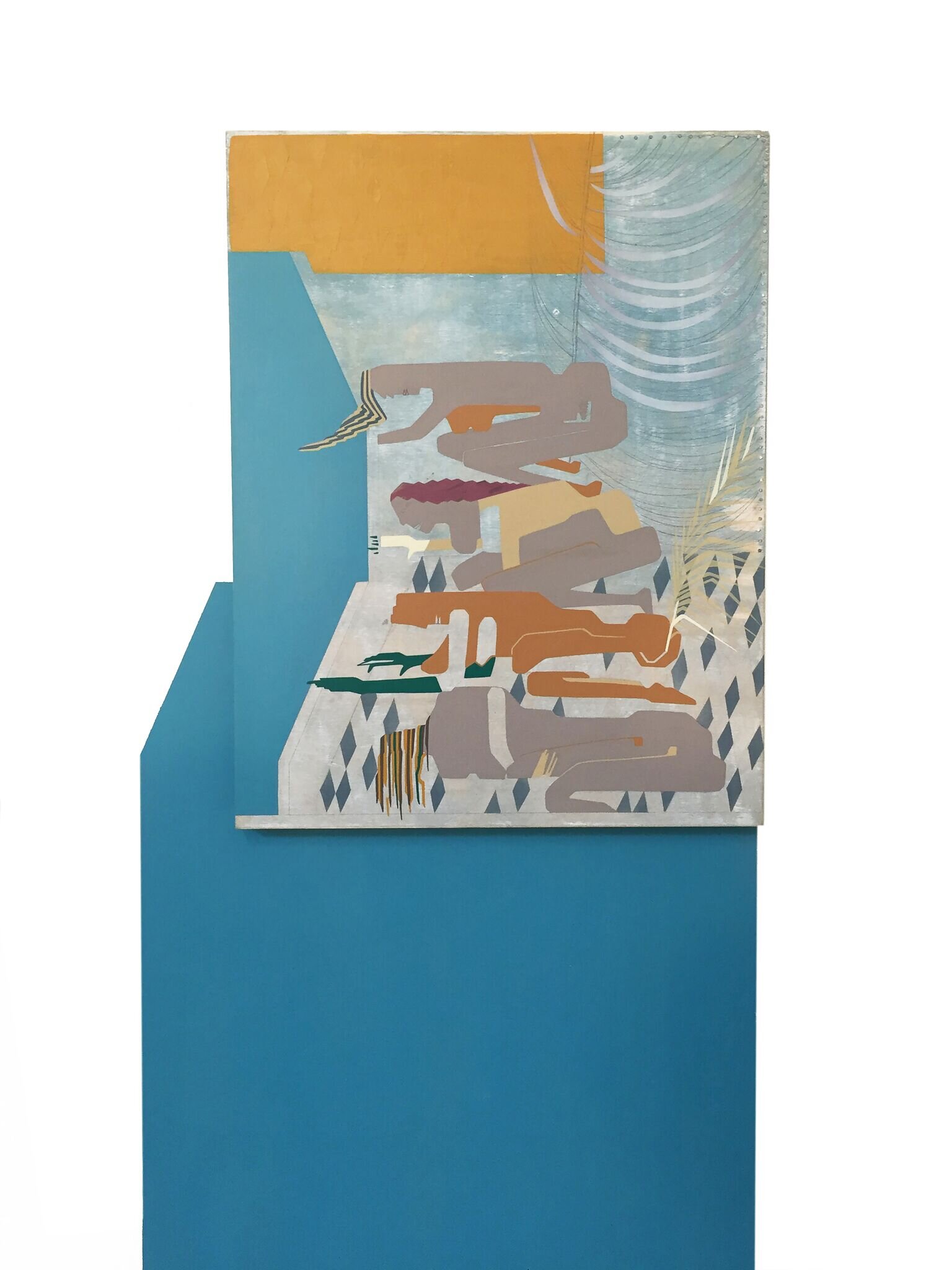

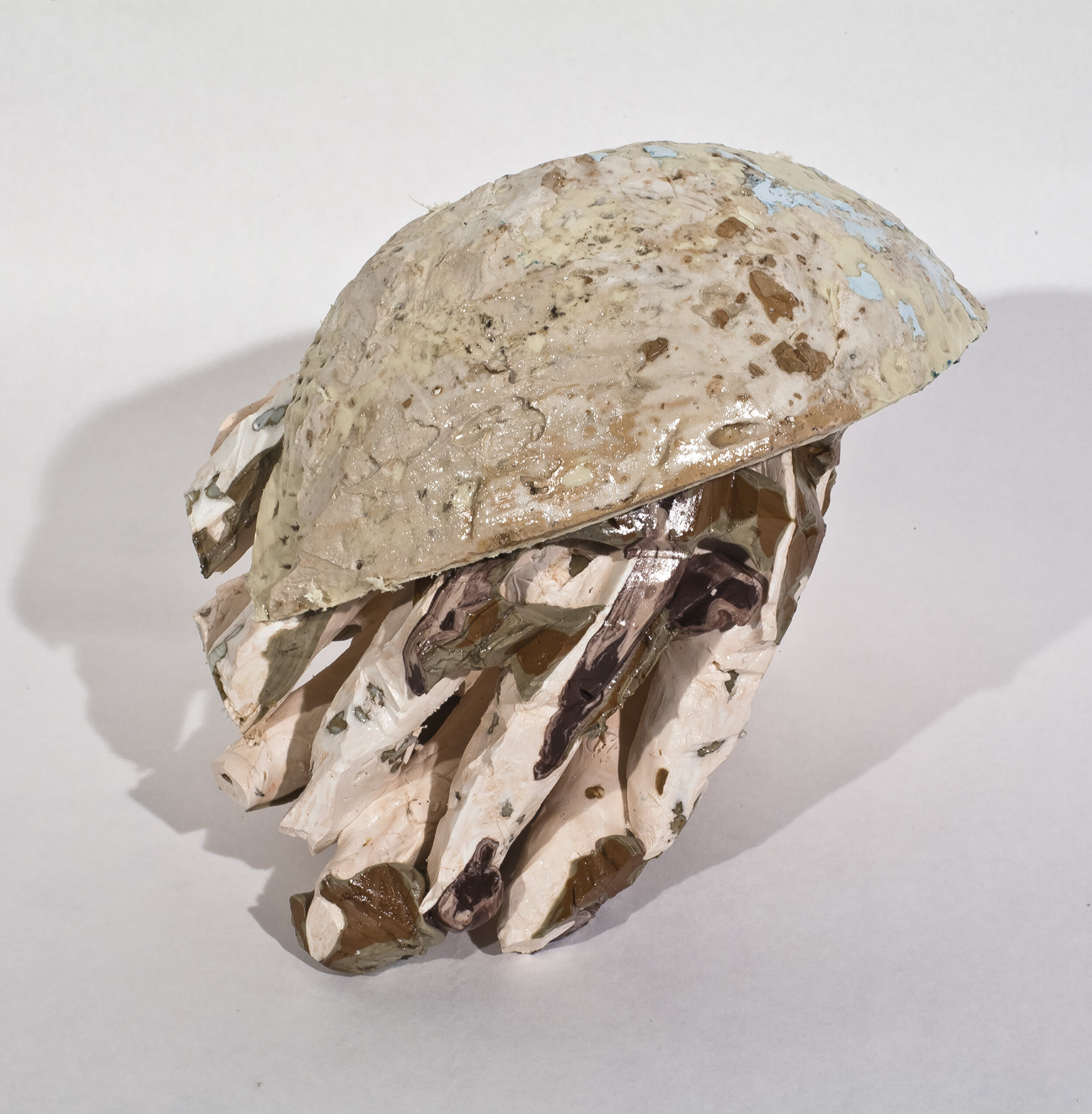
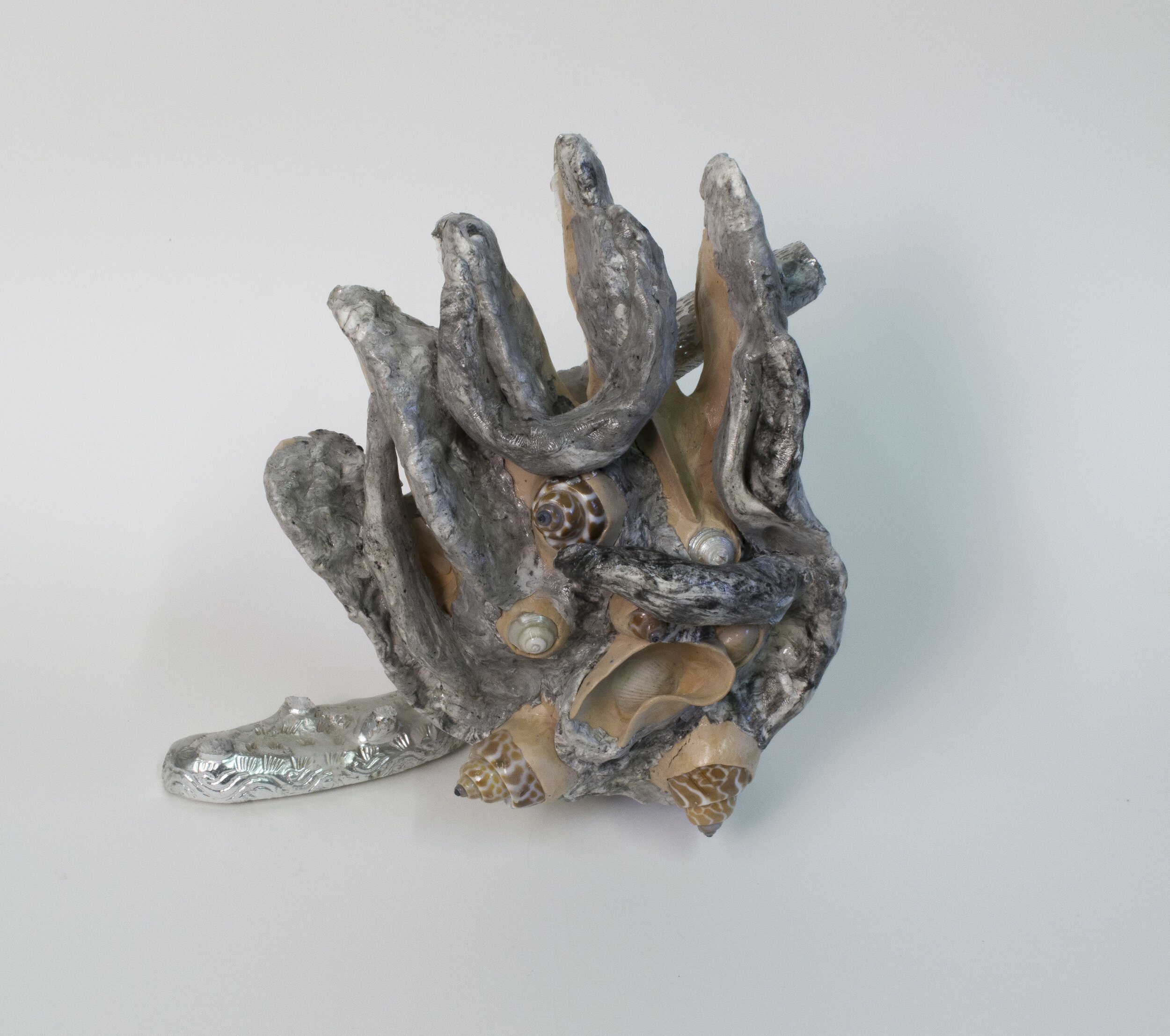
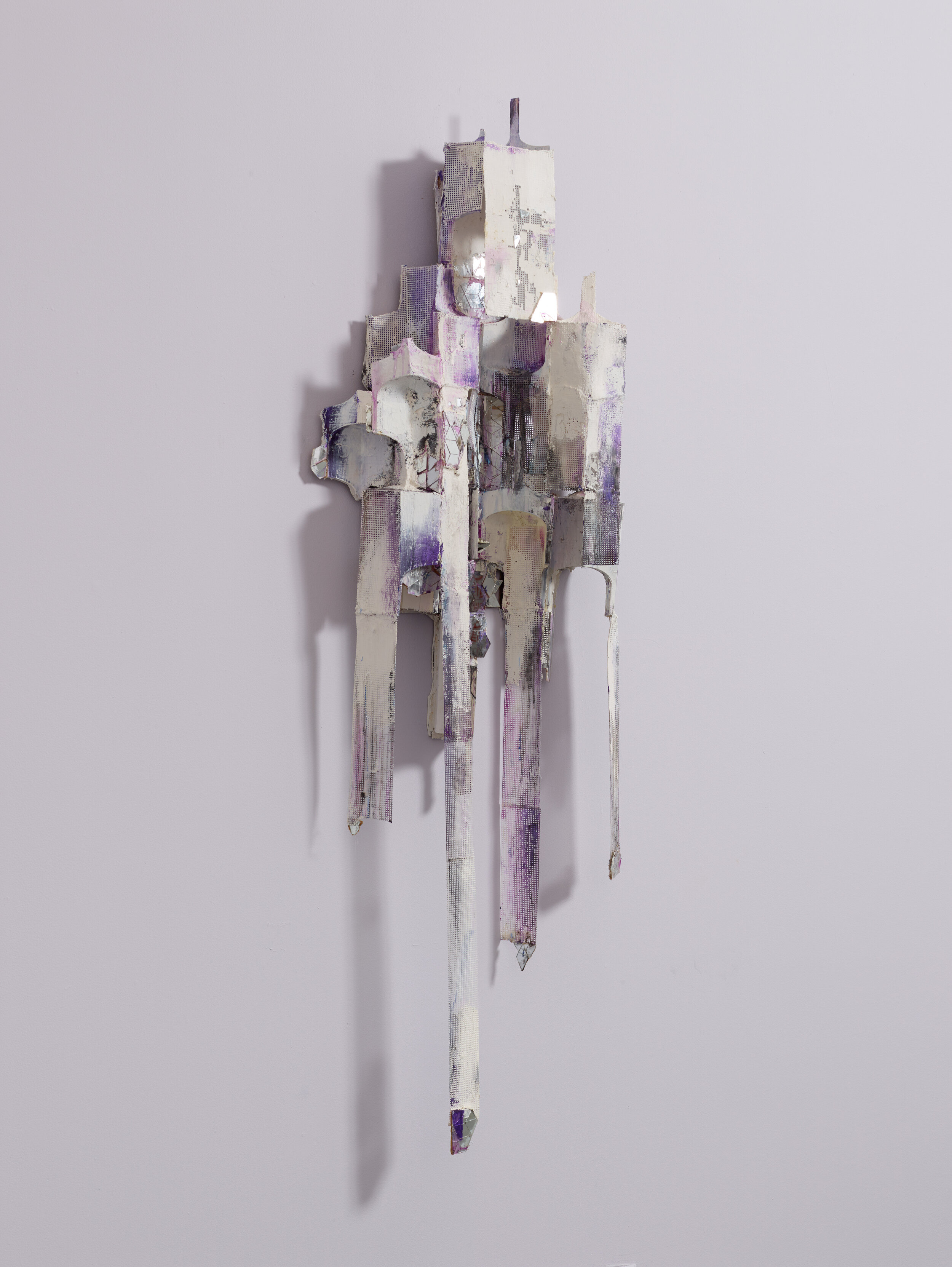
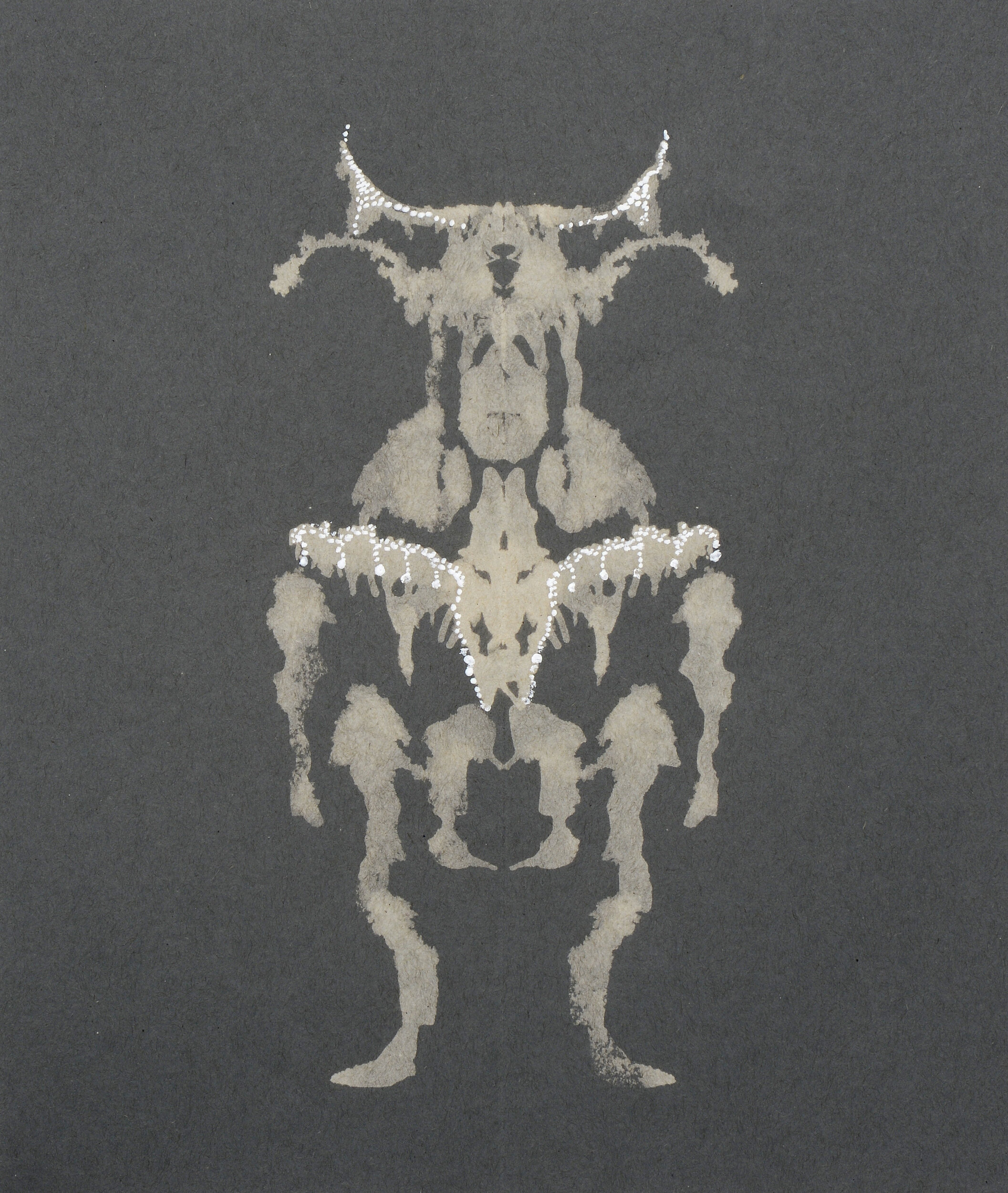

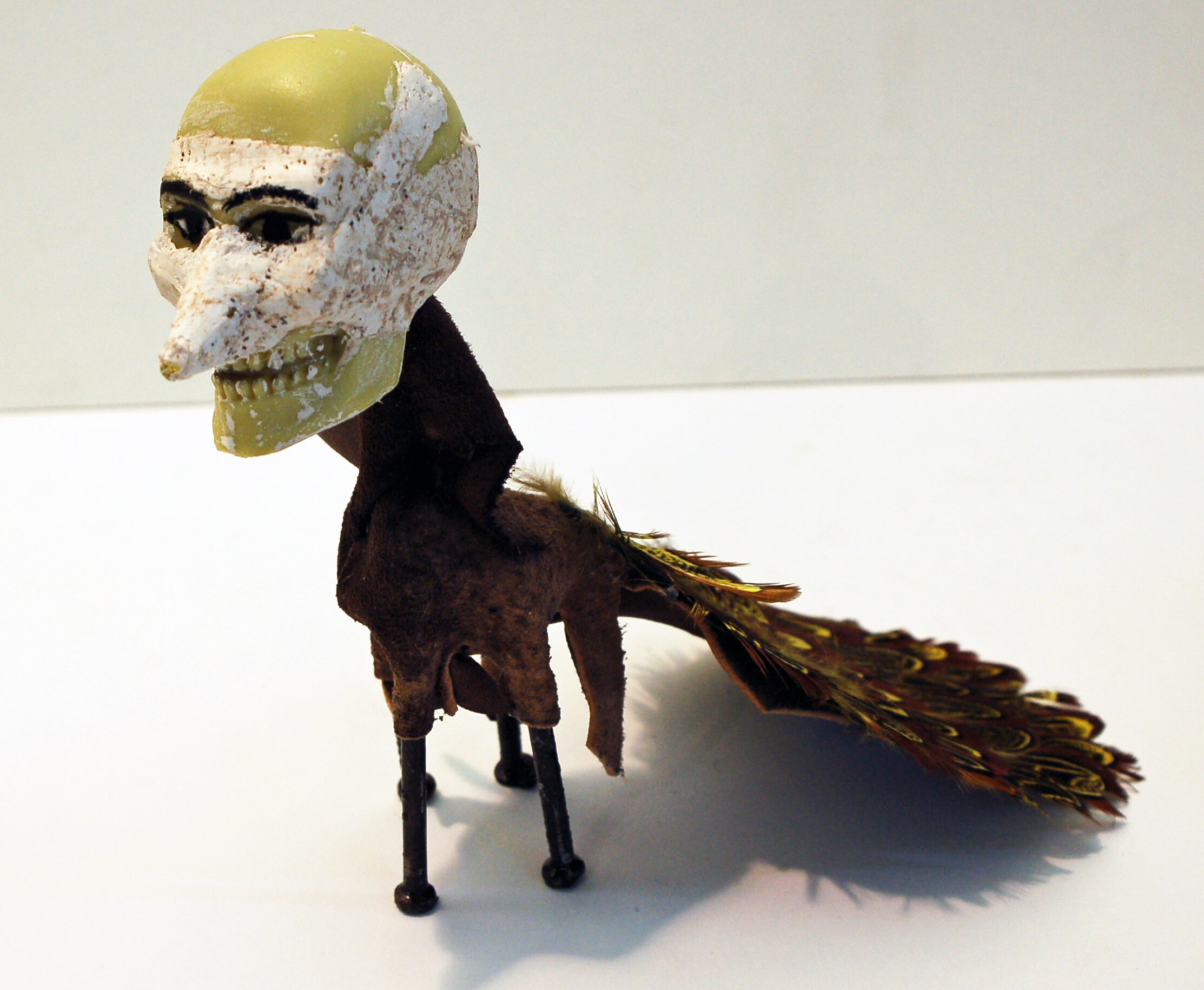
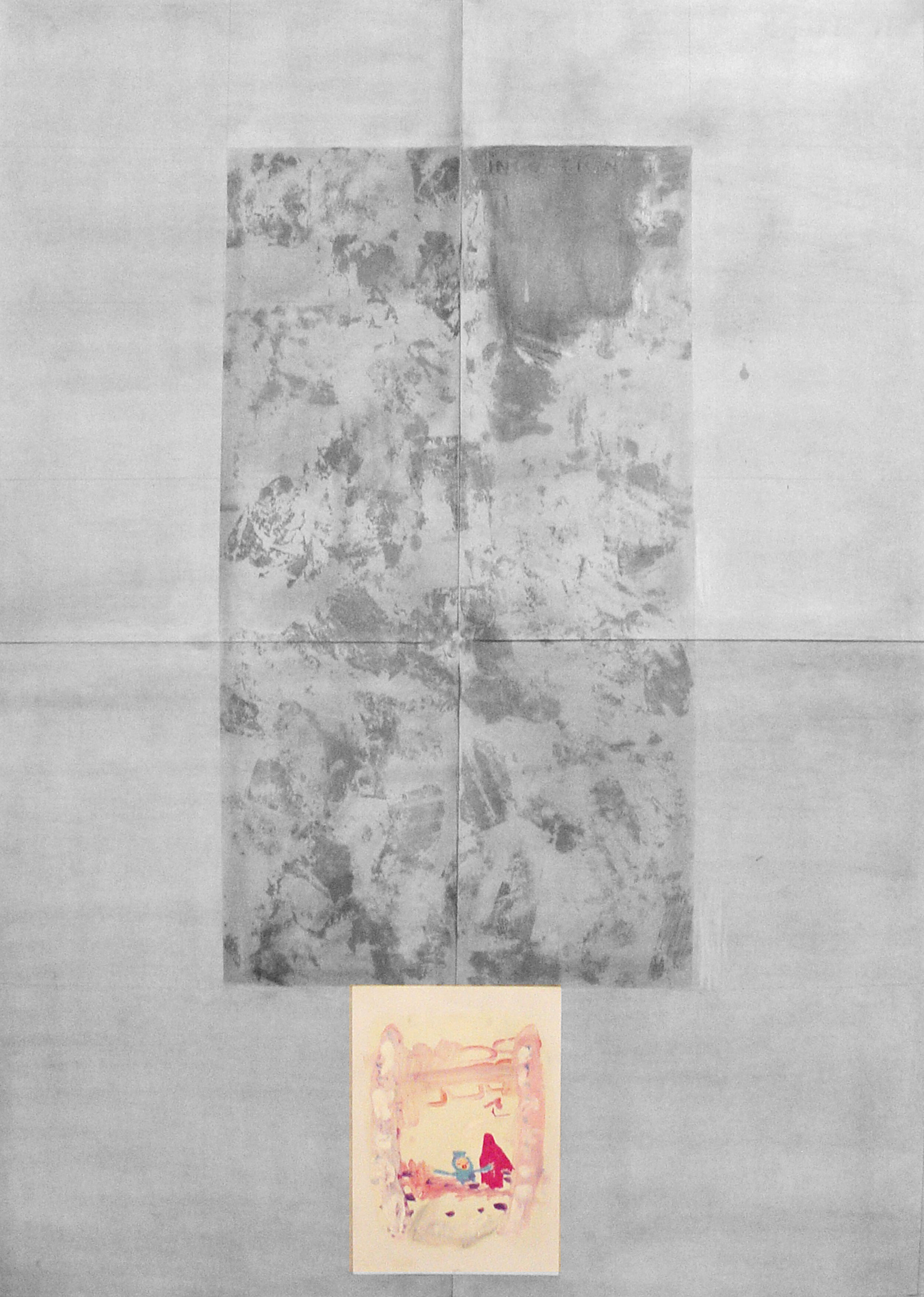
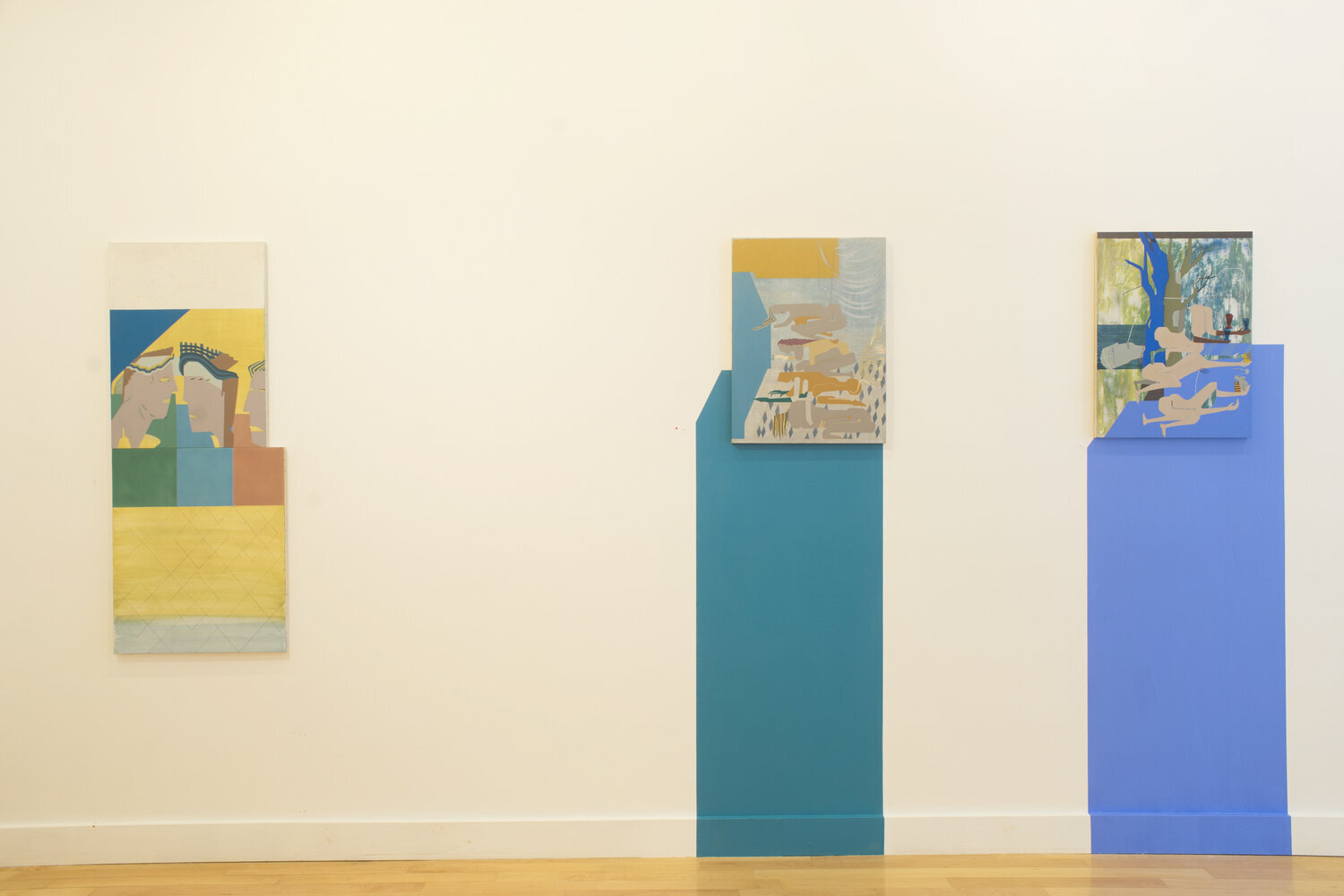

Echo
We are pleased to announce Echo, an exhibit featuring the work of seven Iranian women artists curated by Azita Moradkhani. Echo focuses on the role of embodiment in contemporary art, reflecting upon the impact of the environment on the body and mind and expressing internal conflicts between pleasure and pain, public and private. Moradkhani, a gallery artist, was born in Teheran. She received both her MA and MFA from Boston’s School of the Museum of Fine Arts & Tufts University. Her most recent Gallery exhibit, Victorious Secrets, was in 2016.
Sepideh Behrouzian looks to a prehistoric time in which the human body was directly exposed to nature, free of artifice or man-made invention. Her quiet paintings transport the viewer into an alien landscape devoid of human interference.
In Samira Abbassy’s paintings and sculptures of human/animal hybrids, distinctively Persian characters are merged with mythological animals. Drawing from multiple spiritual traditions, her work comments on the complex history and culture of Iran and other societies.
Inspired by Rorschach inkblots, Roya Farassat’s paintings created with bleach and white acrylic markers are a response to her fears, as embodied by insects and birds. By imagining arrangements of husks and appendages, her work organically connects animals and insects to humans in often humorous ways, such as “The Mother of The Bride” in which insectile parts and white paint ultimately form the image of a woman wearing a pearl necklace.
The colorful naked figures in Maryam Hoseini’s paintings inhabit a drama shifting continuously between the erotic and traumatic: plants grow into and out of orifices piercing the boundaries of the body. The paintings themselves are not limited to the canvas but migrate off their supports into the gallery space itself.
Elnaz Javani represents the sensuous and the emotional body through her figurative stitching on canvas. Skeins of crimson thread simulate geysers of blood or cascades of red hair, evoking the burdens of her own identity and memories.
While not overtly figurative, the bodily scale of Armita Raafat’s architectural sculptures makes them relatable on a human level. The modular patterns in these works are inspired by “Muqarnas,” stalactite-like ornaments installed over entrances to Islamic shrines.
Anahita Vossoughi’s sculptures resemble organs living, as she says, in a “sci-fi phantom culture of [her] own creation.” Using unique materials and found objects, Vossoughi explores the abstracted female body internally and externally, dissecting the ways in which it has been represented over the course of history.
In addition to the works on display, there will be live music, featuring a composition created for this exhibition by Bahar Royaee, performed at the opening on June 2 and the closing on July 7. More details about the performance will be provided at a later date.
